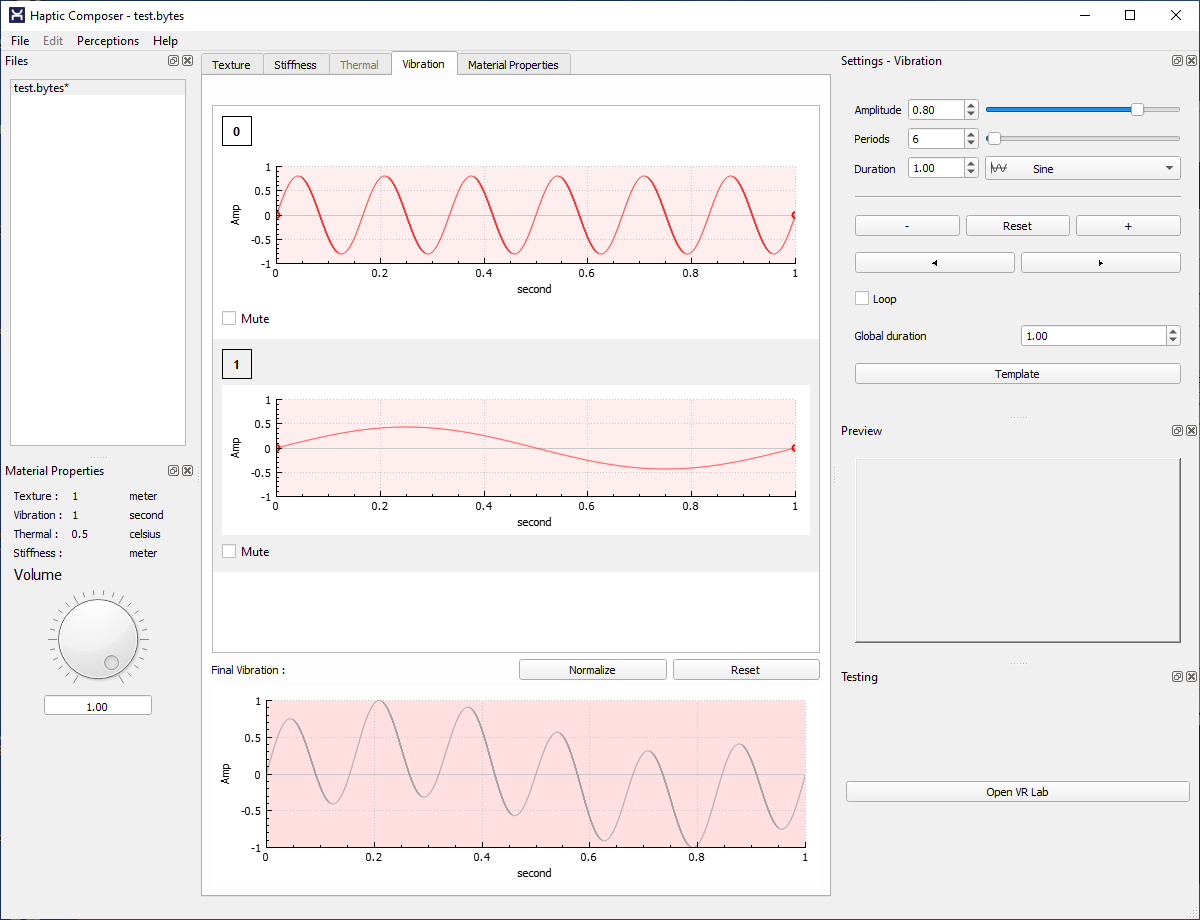Interhaptics Haptic Composer

Tool Summary
| Metadata | |
|---|---|
| Release Yearⓘ The year a tool was first publicly released or discussed in an academic paper. | 2020 |
| Platformⓘ The OS or software framework needed to run the tool. | Windows |
| Availabilityⓘ If the tool can be obtained by the public. | Available |
| Licenseⓘ Tye type of license applied to the tool. | Proprietary |
| Venueⓘ The venue(s) for publications. | N/A |
| Intended Use Caseⓘ The primary purposes for which the tool was developed. | Virtual Reality, Gaming |
| Hardware Information | |
|---|---|
| Categoryⓘ The general types of haptic output devices controlled by the tool. | Force Feedback, Vibrotactile |
| Abstractionⓘ How broad the type of hardware support is for a tool.
| Consumer |
| Device Namesⓘ The hardware supported by the tool. This may be incomplete. | iPhone, Android, PlayStation DualSense, Razer Kraken, Xinput Controllers, Meta Quest, OpenXR Devices |
| Device Templateⓘ Whether support can be easily extended to new types of devices. | No |
| Body Positionⓘ Parts of the body where stimuli are felt, if the tool explicitly shows this. | Hand |
| Interaction Information | |
|---|---|
| Driving Featureⓘ If haptic content is controlled over time, by other actions, or both. | Time, Action |
| Effect Localizationⓘ How the desired location of stimuli is mapped to the device.
| Target-centric |
| Non-Haptic Mediaⓘ Support for non-haptic media in the workspace, even if just to aid in manual synchronization. | None |
| Iterative Playbackⓘ If haptic effects can be played back from the tool to aid in the design process. | Yes |
| Design Approachesⓘ Broadly, the methods available to create a desired effect.
| Direct, Procedural, Additive |
| UI Metaphorsⓘ Common UI metaphors that define how a user interacts with a tool.
| Keyframe, Track |
| Storageⓘ How data is stored for import/export or internally to the software. | Custom JSON, WAV |
| Connectivityⓘ How the tool can be extended to support new data, devices, and software. | API |
Additional Information
The Interhaptics Haptic Composer focuses on the creation of different materials for VR. Vibration can be added to a material by adding different regular waveforms and constants together. The “texture” menu functions in the same way, except that the resulting waveform is rendered statically over position to create bumps and changes in elevation. The “stiffness” menu determines the amount of force returned given the amount of displacement into the material. A fourth “thermal” option exists, but cannot be modified at this time.
For more information, consult the Interhaptics website.